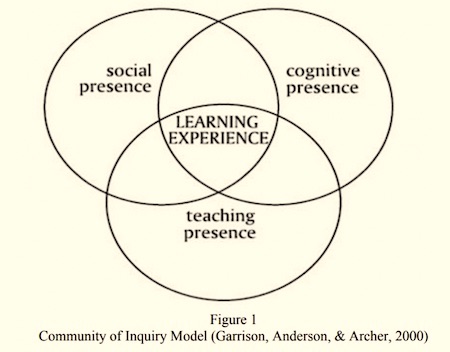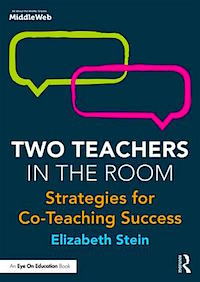Use the ‘3 Presences’ to Help Kids Thrive
A MiddleWeb Blog
 Months into this unique school year, there is one thing I feel certain about. We all need to make intentional time to come up for some air!
Months into this unique school year, there is one thing I feel certain about. We all need to make intentional time to come up for some air!
In fact, at this very moment, as I make time to write this post, I feel as if I’m jumping off a moving treadmill that chooses to incline and decline – speed up and slow down – without notice.
It leaves me breathless at times. And it is all worth it.
Yet, we must remember to take care of ourselves. This post could easily segue into the critical need for self-care – but it won’t. Well, at least not completely.
It is necessary for us to check in with ourselves. Check out this resource by Positive Discipline to ramp up some consistent self-care practices. Also check out these self-care tips for teachers from Understood to get you started – or keep you going – with healthy self-care practices.
Which brings me to my focus for this post. One of the most frequent questions that drives my work with teachers across buildings and schools is: How do I engage my students to want to learn? This question has been around for as long as teachers have been teaching. But these times of remote, hybrid, in-person, and live-streamed teaching and learning bring the question to a whole new level.
From my experiences, here is my short response. Remember that students need time to come up for some air, too! Now for the good part. How do we do that while still teaching the necessary content?
Again, from my experiences these past few months, the solution comes in a tidy little framework called Community of Inquiry (CoI). This framework is empowering times two as two teachers in the room work together to apply it in a co-taught classroom.

Three Engaging Elements
The Community of Inquiry Model is a framework that was designed with online courses in mind – which is perfect for those teaching fully remote, or hybrid, or live streamed. But I am here to tell you it has all the makings for any format of learning. Yes! Even if you happen to be teaching in person. Let’s look at each aspect or “presence” of the Learning Experience.
✻ Teaching Presence
It is no surprise that this presence holds up the other two. This presence works like the foundation of a house: it undergirds everything and holds it all together. Generally speaking, it is the organization of the course, the carefully designed lesson plans, and the structures developed to guide students to navigate through the virtual or physical classroom.
Bottom line is to be organized, be clear, and be meaningful. Providing timely and specific feedback cultivates small incremental success points that keep students wanting to continue on!
✻ Social Presence
Expand your teacher presence by illuminating your personality (here’s an example!). Share that with your students and apply it to all opportunities whether on video, audio, or written communication. Provide time for students to communicate with one another.
Here’s a reminder of some effective discussion strategies at Edutopia. These dialogic moments offer the perfect way to allow everyone to come up for some air – while still focusing on aspects of academic content or any other topic that increases time to enjoy the presence of one another.
✻ Cognitive Presence
The consistent and solid application of teacher presence and social presence creates a smooth path for students to construct knowledge through ongoing opportunities to express themselves. Check out these 15 ways to guide students to reflect from TeachThought. Also, take a look at ways to increase student reflection from the Association for Middle Level Education.
We know teaching and learning during these times is like nothing we have experienced before. Yet, designing our class time – whether remote, hybrid, live streamed, or in person – around the three presences can provide us all some time to come up for some air while engaging our learners in authentic learning experiences.
How are you already embedding each presence in your daily instructional routines? What is one way you may ramp it up in the coming weeks?
 Elizabeth Stein’s Two Teachers in the Room provides a wealth of practical strategies and tips to help K–12 educators co-teach more effectively. Stein presents examples of different co-teaching models and shows how to cultivate a dynamic co-teaching relationship to benefit all students. Click on the book cover here and use the code MWEB1 and receive a 20% discount at the Routledge site.
Elizabeth Stein’s Two Teachers in the Room provides a wealth of practical strategies and tips to help K–12 educators co-teach more effectively. Stein presents examples of different co-teaching models and shows how to cultivate a dynamic co-teaching relationship to benefit all students. Click on the book cover here and use the code MWEB1 and receive a 20% discount at the Routledge site.

































